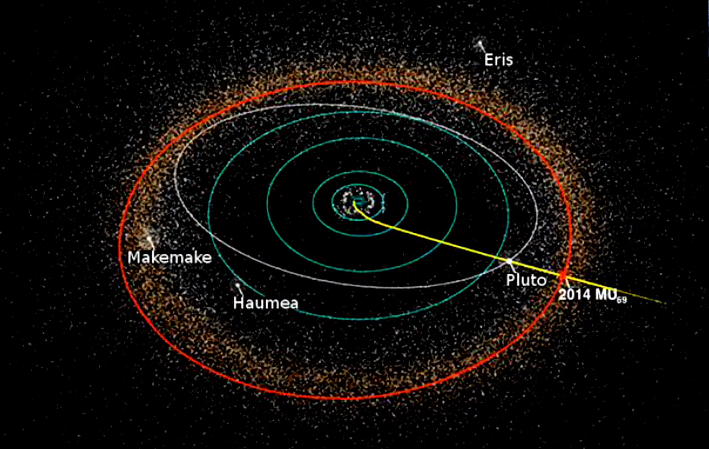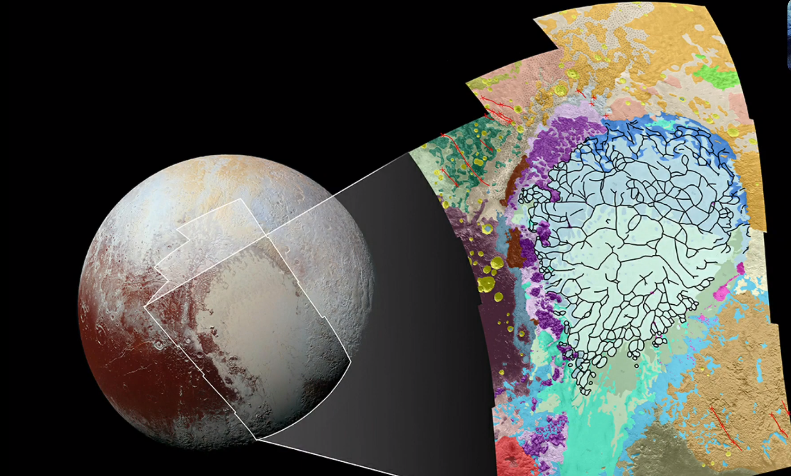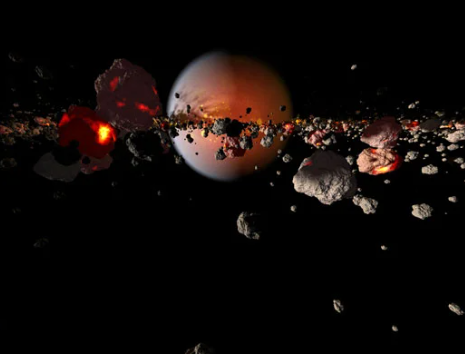On February 18, 1930, American Astronomer Miss Clyde William Tombaugh discovered Pluto and named it Miss Venetia Burney. Pluto is smaller than our Earth’s moon. Pluto is also the last farthest planet in our Solar System from which the Sun appears as a small twinkling star. Everything was going well, but astronomers noticed something very strange, which led to the International Astronomical Union (IAU) removing it from the list of planets on August 24, 2006.
To be a planet, a planet has to pass 3 major conditions. That is why it is called a planet. If Pluto was to be considered a planet, then Pluto had to pass 4 to 5 conditions instead of 3 conditions.
Dwarf Planet
I am mentioning about Dwarf Planet because Pluto was the ninth planet in the solar system until 2006, when scientists demoted it to the status of dwarf planet. What is a Dwarf Planet? A dwarf planet is defined as according to International Astronomical Union (IAU), A planet whose body is celestial and along with the celestial body it also orbits around the sun, the mass of this planet also assumes a roughly spherical shape, but due to its lack of mass, it does not have any moon. And no object revolves around it or comes towards it.
There are other planets in our solar system which are included in the dwarf planet list.

A planet has to pass these tasks to become a planet. After passing one stage, any object has to go to another stage to call itself a planet. If an object fails in any of these stages, it will not be called a planet.
- Spherical Body
- Revolution
- Clear the Neighborhood
- Eccentric Nature
Spherical Body
For a planet to call itself a planet, its body must be spherical. Any planet must pass this stage to call itself a planet. That is, the mass and land of the planet should be such that it transforms itself into a spherical shape. Like we have eight planets.
Now we cannot call every round object because our moon is also round and there are many objects whose shape is round, so any object must pass the first stage to call itself a planet. But by passing this stage it cannot be said that it is a planet. Pluto passes in this stage.
Revolution (Pluto first stage)
Pluto has easily passed its first stage but still it is not called a planet. Now comes the turn of Revolution. Any planet must orbit its star. If a planet does not orbit its star, it is not called a planet. Like our Earth, Jupiter, Mars and other planets are orbiting around the Sun, which is why we know that they are the planets of our Solar System. Similarly, Pluto was also easily passing itself through this stage, which means that Pluto is also orbiting the Sun like other planets.
Where our Earth completes one orbit around the Sun in 365.25 days. Similarly, Pluto completes one orbit around the Sun in 246 years. The main reason behind this is Pluto’s distance from the Sun, which averages 3,600,000,000 mi. Pluto proved itself to be a planet too. But the trouble for Pluto didn’t stop there either. Now the next stage for Pluto was Clear the Neighborhood.
Clear the Neighborhood
Now this stage is also the most important if Pluto wants to call itself a planet then this stage has to be followed. No planet allows any object around it. Because a planet forces the object around it to revolve around it – a planet forces any object in its orbit to revolve around it i.e. that object becomes its satellite. If it does not happen that an object does not orbit the planet, then in another condition that object collides with that planet and bursts.
As an object collided with the earth billion years ago, our moon was formed at that time. Or let’s talk about 4.8 billion years ago when an asteroid collided with the earth which killed 70% of life on our earth including humans, dinosaurs. But in the case of Pluto, nothing like that has been seen, neither any object collides with Pluto nor any object orbits Pluto. Here, Pluto keeps natural satellites with it, but Pluto starts moving with them.

Here Pluto fails miserably in this stage. Because any planet forces any object to revolve around it. Here Pluto was reversed from the rest of the planets, here Pluto itself starts moving with the object. Due to which it was removed from Planet’s list. But the matter does not stop here. Some astronomers have said that Pluto is small in size, due to which it moves in such a way that Pluto was neither failed nor passed in this stage. But now comes the turn of the last stage from where it had to be decided whether Pluto is a planet or not.
Eccentric Nature
This was Pluto’s last chance to establish itself as a planet. According to astronomy no planet should be too eccentric. Eccentric in astronomy means that which does not follow circular path or circular flow. Planets revolve around the Sun in elliptical order, that is, each planet revolves around the Sun in its own orbit.
But Pluto was showing something different here as it was exhibiting an eccentric behavior.

In the year 1979, scientists noticed something very different in the orbit of Pluto that Pluto goes out of its orbit and enters the orbit of Neptune. When researched, it was found that the orbit of Pluto is crossing the orbit of Neptune. In the same year, snow also fell in the Sahara Desert. Some scientists believe that it is related to Pluto’s behavior and some scientists deny it. After 20 years i.e. in 1999, Pluto crossed the orbit of Neptune and left the orbit of Neptune. This was also a major reason for excluding Pluto from the list of planets. Due to these two reasons, Pluto was removed from the category of planets.
Conclusion
Due to these reasons, Pluto was removed from the category of planets. If an object calls itself a planet, it must go through these four stages, if it fails to pass any one stage, it will be removed from the list of planets. Due to Pluto passing the first two stages, Pluto is included in the Dwarf Planet category. If any object passes two or three stages, it is included in the Dwarf Planet category.

